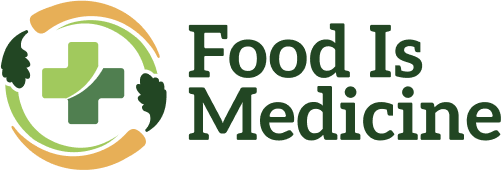Download the HHS Food Is Medicine Analytic Framework PDF [590 KB]
The HHS Food Is Medicine (FIM) analytic framework was developed to provide a research-based, community-centered guidepost to support diverse leaders implementing and measuring the effects of FIM interventions.
The opportunity to evaluate and report on effective FIM models using a consistent measurement framework led HHS to work closely with federal and external research, practice, and policy partners who provided individual inputs to inform the development of the FIM analytic framework. The framework may be used as a resource by partners implementing FIM interventions to support measurement across priority domains.
Analytic Framework Elements
The analytic framework includes 6 core elements and should be considered a tool to drive consistent measurement of FIM interventions that lead to a better understanding of FIM benefits.
The analytic framework is not intended to be directive, nor does it convey that all partners engaged in FIM interventions are responsible for measuring all indicators.
The graphic below shows the 6 core elements of the Food Is Medicine analytic framework.
Analytic Framework Definitions
Guiding Principles
These principles helped guide us and federal department partners to develop a measurement framework. External partners are encouraged to employ these principles across systems and programs to advance the collective understanding of Food Is Medicine.
Analytic Domains
A domain is a major grouping that identifies an important concept to understand or measure.
Analytic Sub-domains
Sub-domains are areas of focus nested in a domain that is framed for assessment purposes and may be expressed using a group of indicators that hang together to represent measurement of the concept.
Priority Indicators
Indicators represent a state or concept that can be measured. They provide a strategic or higher level of understanding to characterize and quantify a state or concept.
Measures and Tools
Measures and tools provide a quantitative value to represent a concept or sub-concept. They may point to, signal, or otherwise provide the indication or presence of a specific concept. Observable and measurable, they serve to define a concept in a practical way.
Shared Insight
This final component of the framework supports insight generation, collaboration, and action, ensuring that FIM initiatives drive meaningful change across health care, food systems, and policy landscapes.
Development of the Analytic Framework
The FIM analytic framework was developed to provide a research-based, community-centered guidepost to support diverse leaders in implementing and measuring the effects of FIM interventions.
The opportunity to evaluate and report on effective FIM models using a consistent measurement framework led us to work closely with federal and external research, practice, and policy partners who provided individual inputs to develop this framework that can be used as a resource by partners implementing FIM interventions to support measurement across analytic domains.
The analytic framework was developed between February and September 2024 through a series of in-person and virtual engagements. Guiding principles, analytic domains, sub-domains, and priority indicators were identified during this first phase.
Research and Measurement Data
The FIM implementation landscape is dynamic as the field continues to develop. Many promising models are emerging. However, to guide a diversity of effective approaches, we need measurement and resulting insights to understand how to best implement and sustainably integrate FIM activities within health systems and communities to improve nutrition and advance health equity.
A robust research and evaluation literature is growing across the FIM landscape — but the field has not reached consensus of standard measures, especially in the context of implementation. The convergence of increasing prevalence of FIM efforts and the need to demonstrate benefit necessitates a shared approach for strategic measurement across diverse contexts.
Updates to the Analytic Framework
A second phase of the development of the Food Is Medicine analytic framework is underway and will continue to deepen measurement details and supporting resources as the FIM initiative advances.
In 2025, we anticipate priority measures, associated data collection tools, and measurement roles among FIM partners.



